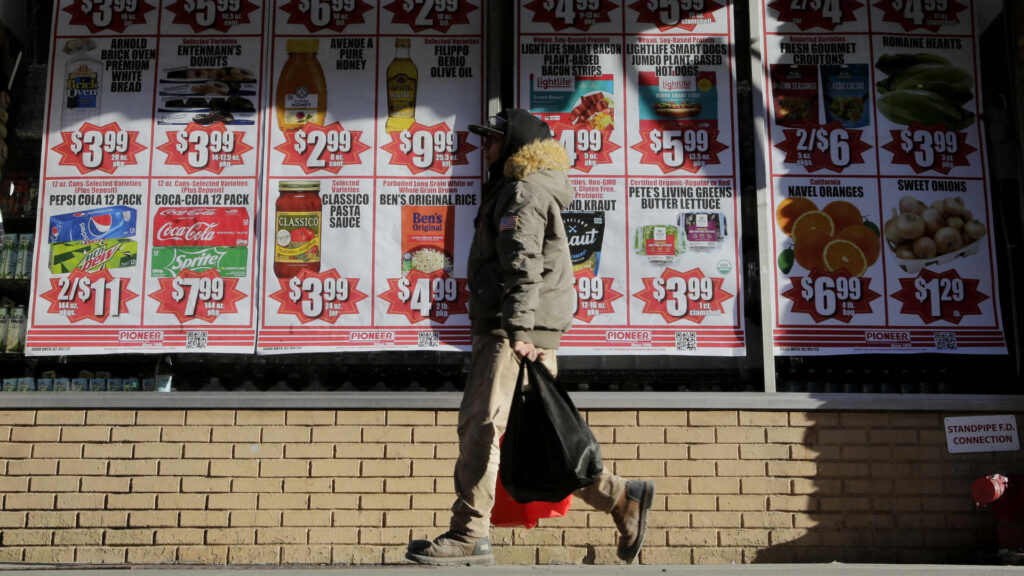Prices are displayed in a grocery store on February 01, 2023 in New York City.
Leonardo Munoz | Corbis News | Getty Images
Just as Federal Reserve officials have grown optimistic that inflation is cooling, news could come countering that narrative.
All market eyes Tuesday will be on the release of the Labor Department’s consumer price index, a widely followed inflation gauge that measures the costs for dozens of goods and services spanning the economy.
The CPI was trending lower as 2022 came to close. But it looks like 2023 will show that inflation was strong — perhaps even stronger than Wall Street expectations.
“We’ve gotten surprises on the soft side for the last three months. It wouldn’t be at all surprising if we get surprise on the hot side in January,” said Mark Zandi, chief economist at Moody’s Analytics.
Economists are expecting that CPI will show a 0.4% increase in January, which would translate into 6.2% annual growth, according to Dow Jones. Excluding food and energy, so-called core CPI is projected to rise 0.3% and 5.4%, respectively.
However, there’s some indication the number could be even higher.
The Cleveland Fed’s “Nowcast” tracker of CPI components is pointing toward inflation growth of 0.65% on a monthly basis and 6.5% year over year. On the core, the outlook is for 0.46% and 5.6%.
The Fed model is based on what its authors say are fewer variables than the CPI report while utilizing more real-time data rather than the backward-looking numbers often found in government reports. Over time, the Cleveland Fed says its methodology outperforms other high-profile forecasters.
Impact on interest rates
If the reading is hotter than expected, there are potential important investing implications.
Fed policymakers are watching the CPI and a host of other data points for clues on whether a series of eight interest rate increases is having the desired effect of cooling inflation that hit a 41-year high last summer. If it turns out that monetary tightening isn’t…
Read the full article here





